April 14, 2022
In October of 2012, Jack Nolan asked the Friends of Lake Wingra for help in selecting an Eagle Scout project. Jack wanted to do something to help the lake, and after I gave Jack a tour of the watershed, learning about some of its problems, Jack decided to build a second rain garden at Thoreau School. There was already a small rain garden built by Stephanie Robinson, but it wasn’t large enough to control runoff from the paved playground. The Friends of Lake Wingra provided a grant of $1,500 for plants, snacks for volunteers, and a sign.
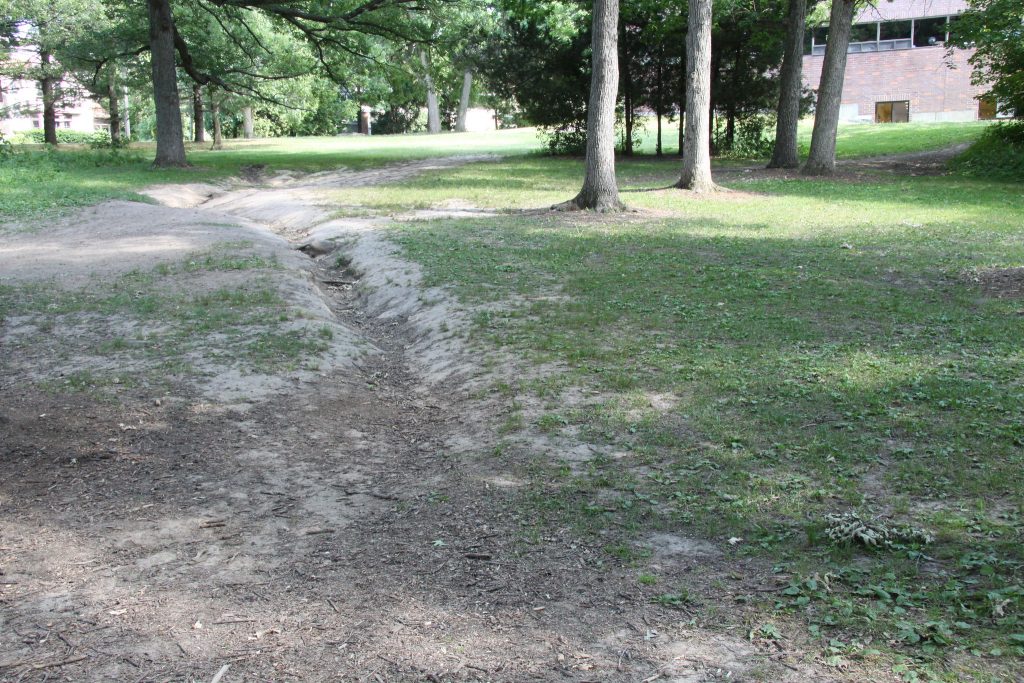
The garden would help control runoff from the playground, sidewalks, and the school’s roof. During storms, torrents of water flowing down a hill towards Nakoma Park had eroded a deep gully. Photo 2. A garden here would also teach children about green storm water control, replenish groundwater, and increase biodiversity. By filtering out dust and air pollution, the garden would improve the health of students.
Plans take shape
There was only one place big enough for our garden–and far enough from potential damage from sidewalk snow plows. But it was very shady under trees and located on a substantial slope. Photo 3. We decided we could handle the slope by “terracing” the garden, like the rice paddies in Indonesia.
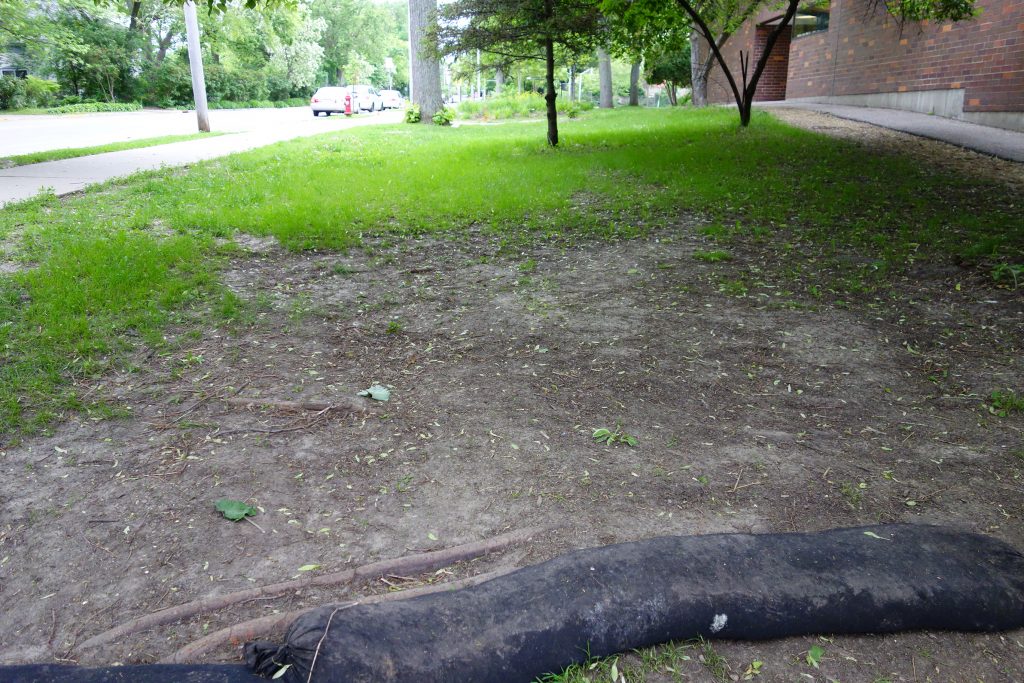
There were “silt socks” at the Edgewood Campus, left over from a construction project. Edgewood gave permission to recycle the socks to create the dams for our terraces. Photo 4.
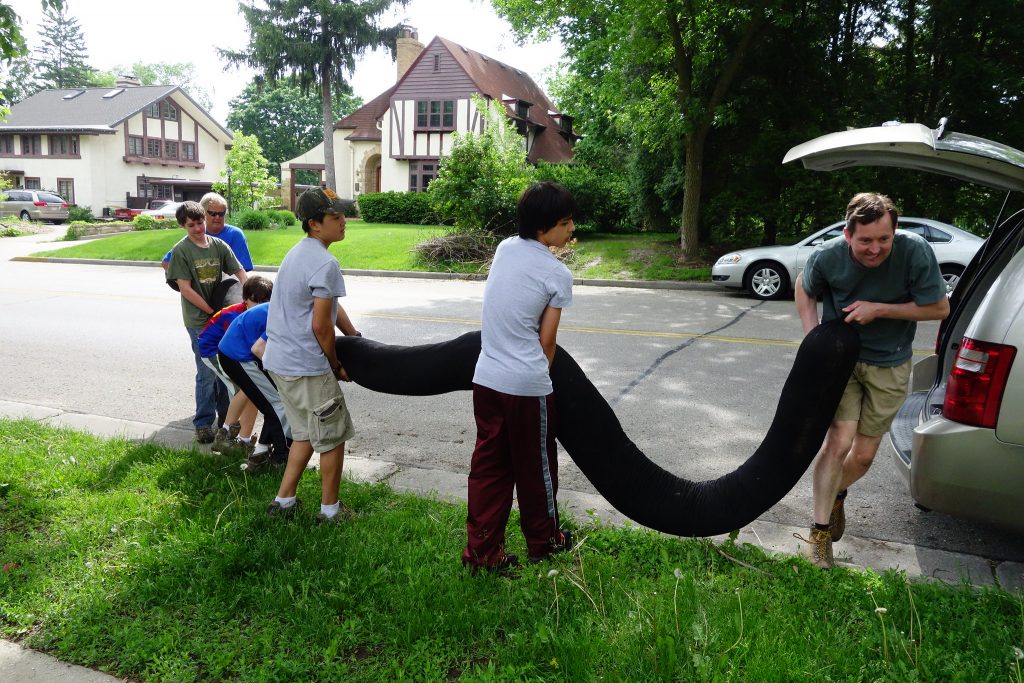
We selected mostly shade tolerant plants, ordered wholesale from Agrecol, LLC.
We couldn’t afford hiring a Bobcat to dig basins, so we refined our plans with an eye to moving earth efficiently with shovels. Jack built a 1/4 scale model at Vilas Beach. Photo 5. This showed us that the downstream berm (earth dam) would be large–we needed to plan sufficient space for it.
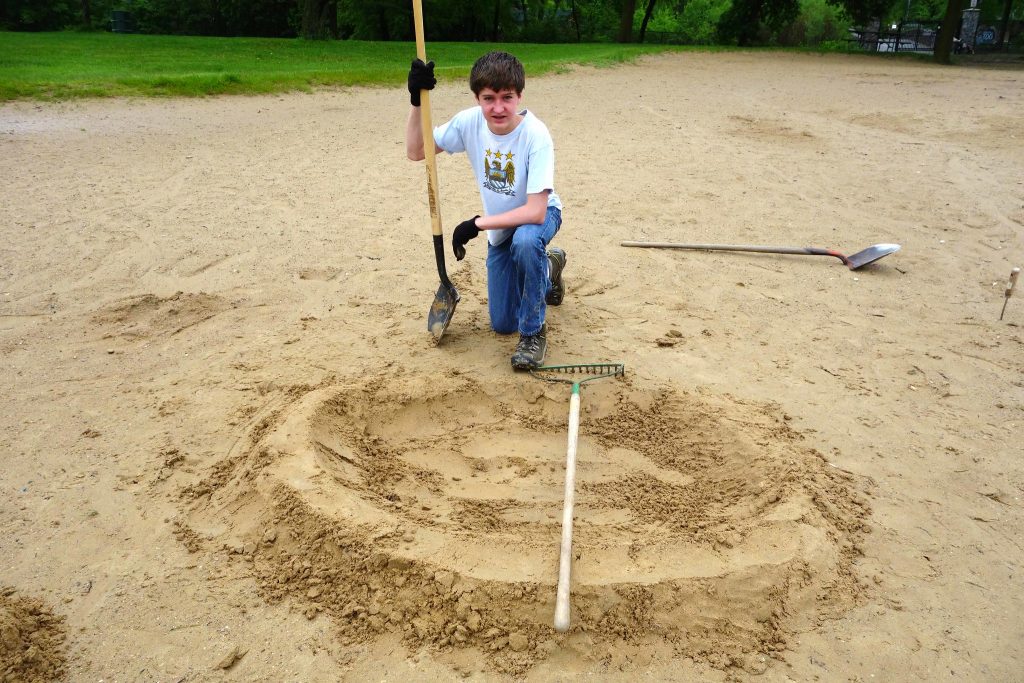
We also studied the existing, upper rain garden at Thoreau to see what we could learn. We concluded that the berm had to be level–always the same altitude–so that it would overflow everywhere at the same time. This would prevent the erosion we were seeing at the upper garden where the water drained over the dam.
Construction Day
On Saturday, June 1, about 17 people helped dig two basins over four hours. This included 10 people from Jack’s scout troop. Photo 6.
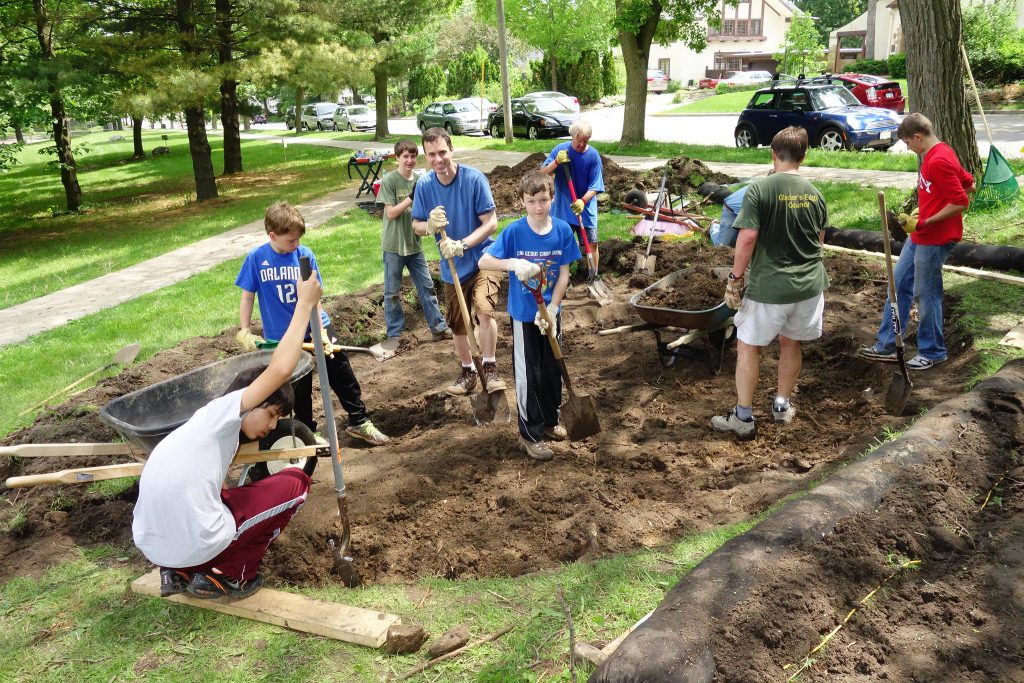
The basins were completed, then protected against rain with silt socks and tarps. Excess dirt was piled, for later pickup by School District personnel. Photo 7.
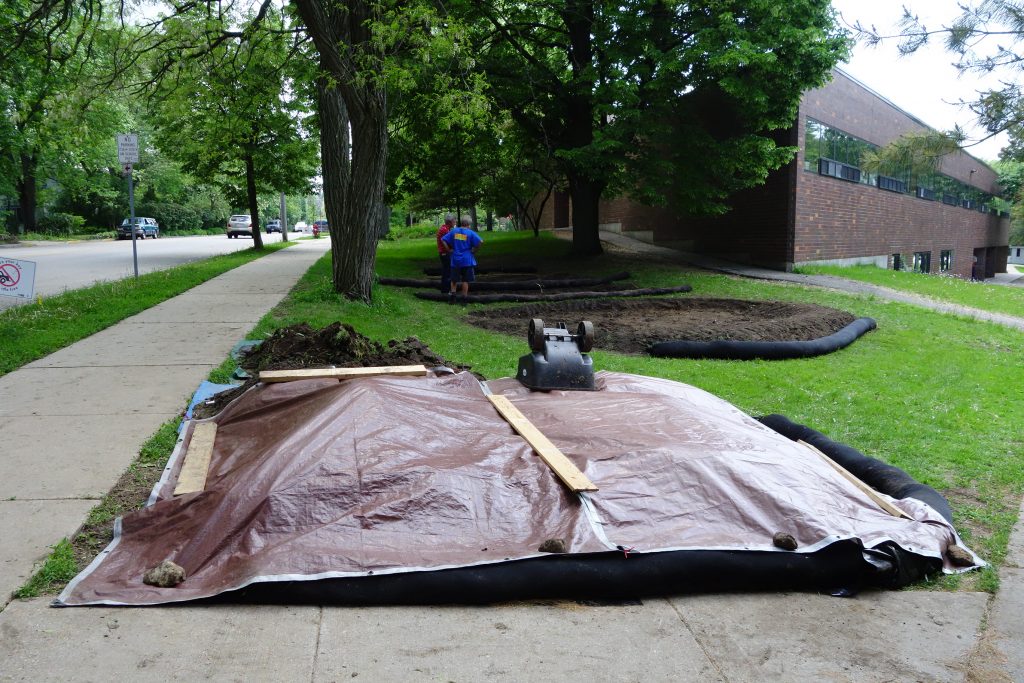
We ran into an extensive root system while digging the upper basin. We decided not to cut any roots larger than 1″ in diameter. This slowed us down and reduced the volume of the basin.
Planning for Planting Day
On Sunday, Liz McBride met with Jack to decide precisely where the plants would go. Although Jack had already presented a rough plan to FOLW, their goal was to refine that plan based on Liz’s expertise, and on how the basin actually looked. On Monday, Liz began to put markers into the basins, indicating zones and plant locations. Photo 8.
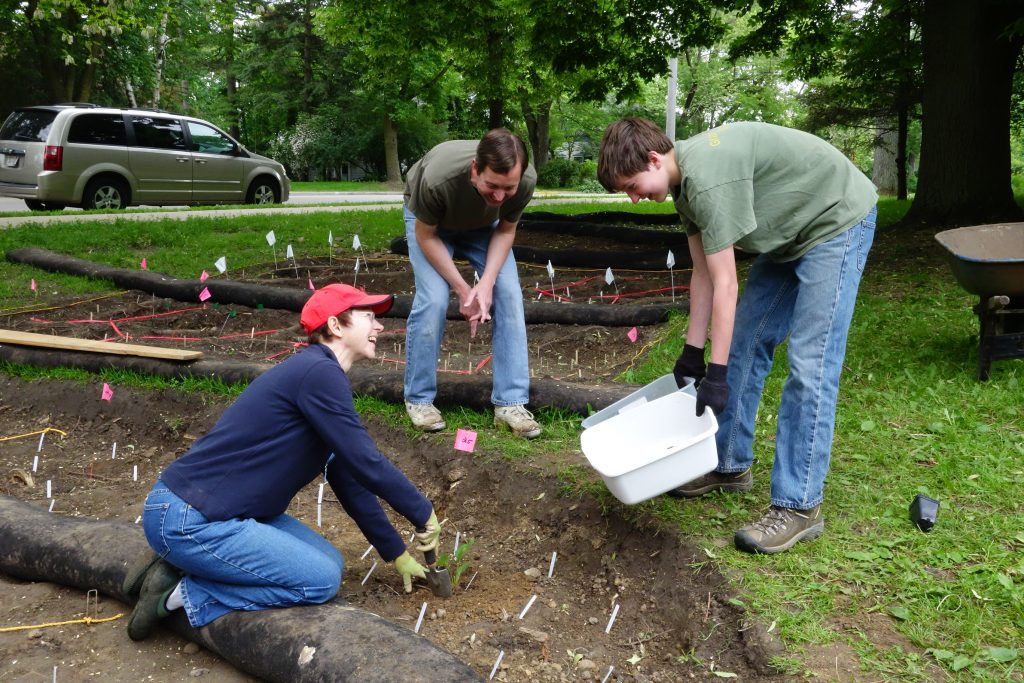
At this point, we realized the two basins weren’t as large as planned. Where to put the excess plants? I figured out a design for a third area (without a basin because of roots) located upstream in dense shade under a tree.
We made additional plans to protect our garden from erosion. We picked up three more gargantuan silt socks from Edgewood for use in constructing the third basin. Before planting day, Jack and I laid an erosion control blanket over the big lower berm to protect against forecast rain. David and Jack were “on call,” to shore up erosion controls, in case of heavy rain.
On “planting day,” our biggest concern in the very tight space was to avoid stepping on the new plants. So “planters” were divided into teams of two, with one volunteer inside the garden doing the planting and the “partner” outside the garden, passing in plants, compost, and other needed items. Photo 9.
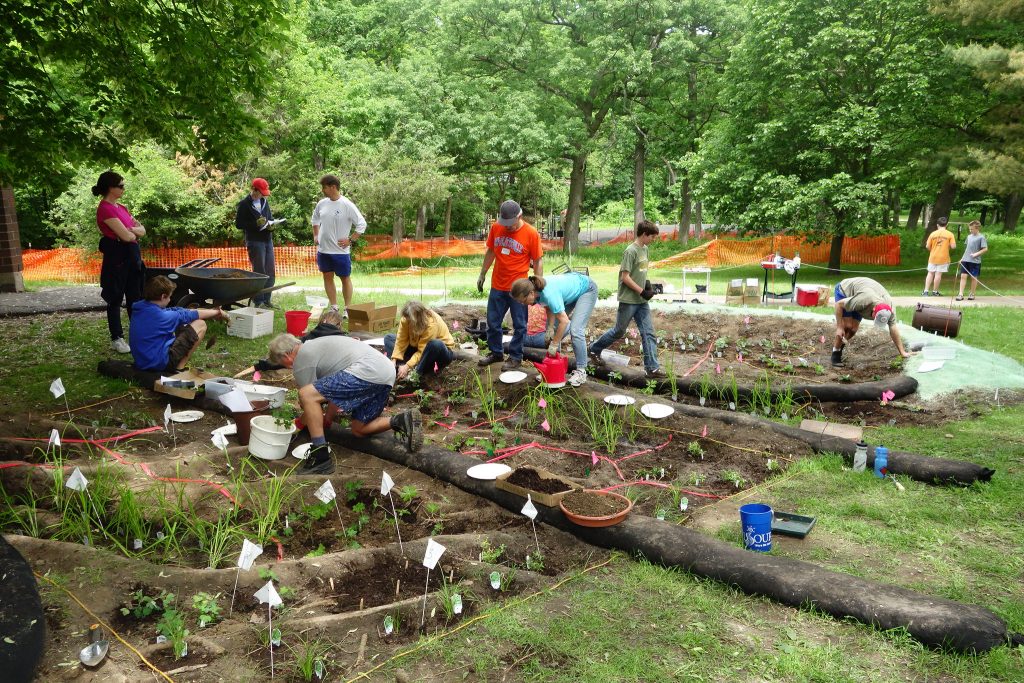
Protecting the garden from storms
A rain garden is at risk of washout until the plants become well-established. So we decided to observe how the garden responded to rain before designing detailed protections against erosion. We didn’t know where the water might overflow from one terrace to the next. And the lowest part of the garden had a big basin. If the basin there overflowed, a large gully could form in just hours, destroying the berm.
Knowing a severe storm was coming, I beefed up our protections. I dragged silt socks around to keep as much water out of the gardens as possible.
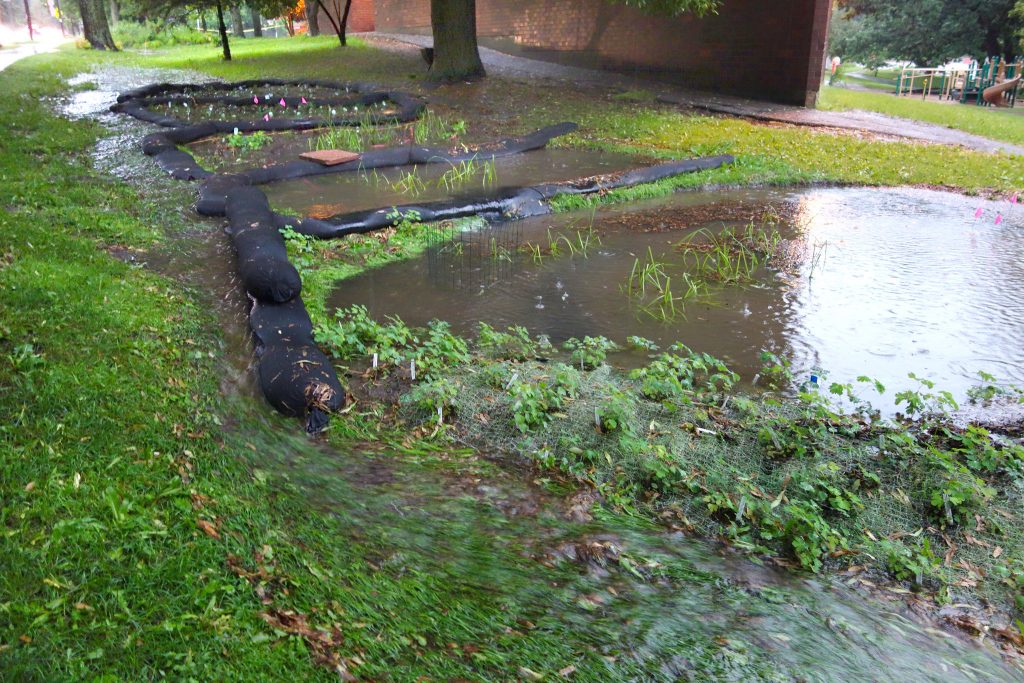
On June 12 and 13, there were heavy rainstorms. The newborn garden was under siege! During the first storm around dawn, torrents of water came down the drainage way, headed for the garden! I saw it was possible to deflect much of the water around the garden to one side, so I dragged the heavy silt socks into revised positions. Photo 10. Suspense building, the large lower basin filled to within 6″ of the top. But the dam didn’t give way–almost no damage was done.
The week of June 23 brought more severe storms. We built a spillway from basin #2 to basin #3. We planted more plants. After each storm, we dug out plants buried in debris. Two silt socks began to shift–we stabilized them with metal stakes. We brought still more silt socks from Edgewood, laying a second tier on the bypass side.
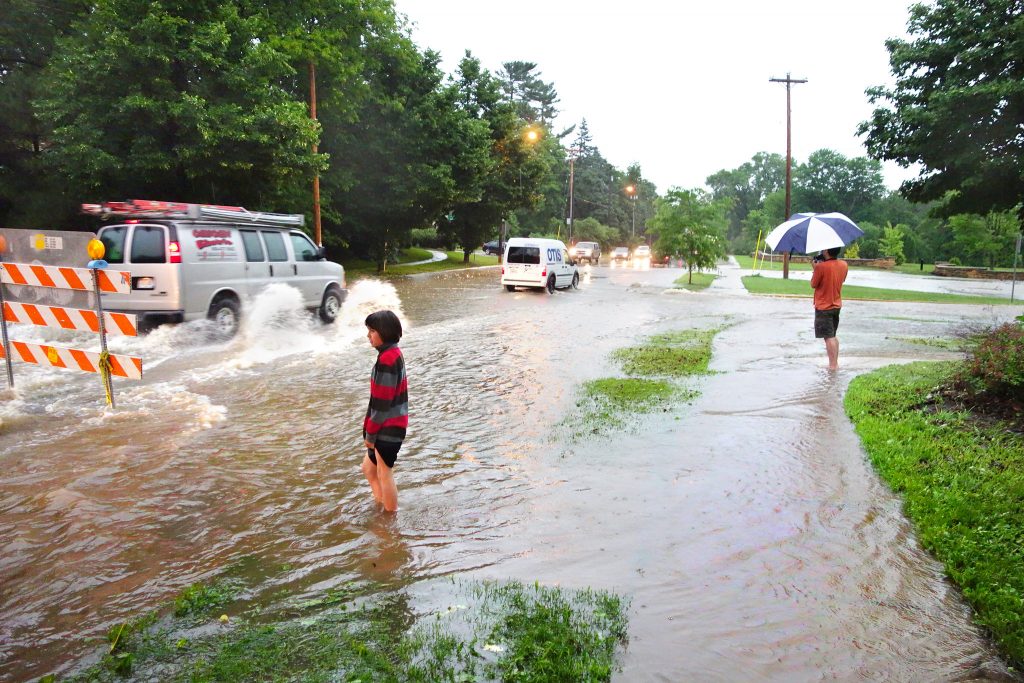
At dawn on June 26, there was a cloudburst with severe flooding in Nakoma Park. Photo 11. The silt socks managed to deflect torrents of water around the rain garden. The berm on pool #3 overflowed–but since one volunteer made the berm so perfectly level, there was no single discharge channel that could erode, and so the berm survived.
Years following construction
Growth has been slow in the heavy shade, so it took about three years for the plants to become well-established. We added a number of new native plant species from our home garden, bringing the total of natives to at least 21 species. In some places, we have planted three layers of shade-tolerant plants—snakeroot (36” tall), mayapple (18”), and wild ginger or Pennsylvania sedge (ground-hugging). We expect that under 4 layers of shade including the tree, it will be too dark for any weeds at all! And we expanded the garden uphill where it was too shady for grass to grow.
We eventually replaced the ugly silt socks with strips of black plastic edging. A parent volunteered to bring large stones from an old farm building—we used them to build attractive terraces. We improved water flow into the garden with channels. We experimented with three very shade-tolerant species to find out which worked the best.
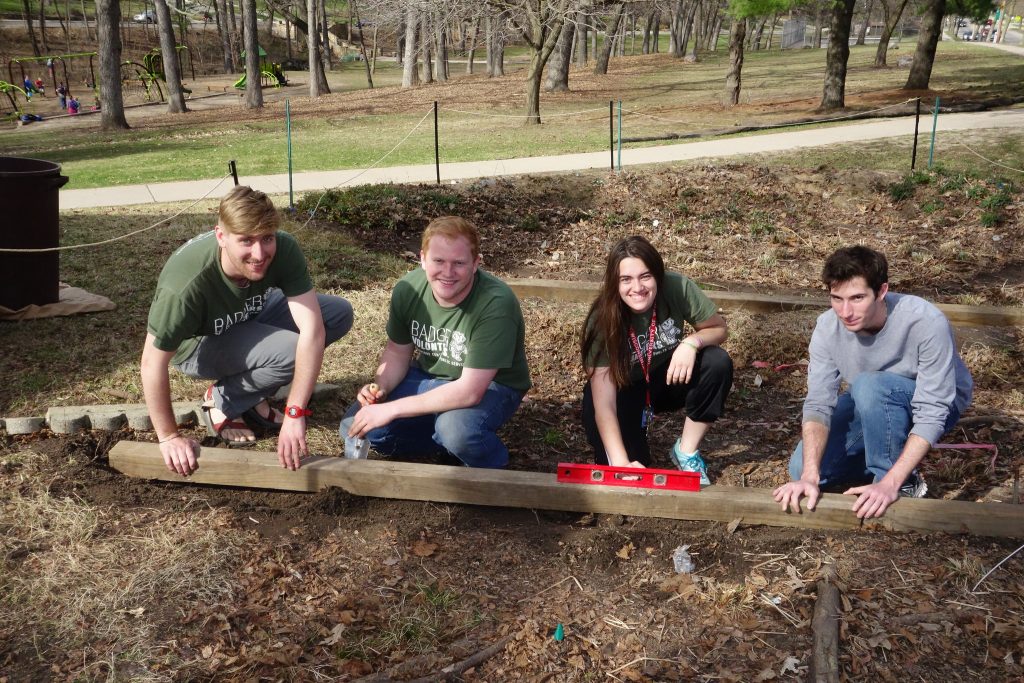
Currently, I maintain the garden with help from the Badger Volunteers and a few parents. Photo 12. But more parents of students at Thoreau need to step up and create an organization to permanently maintain the garden, since I’m now 80 years old. When children (and their parents) move on from Thoreau, who will step in the carry the baton forward? It’s sad when beautiful rain gardens die prematurely through neglect. Thousands of hours of tender loving care by scores of people would go down the drain, if we don’t assure this garden’s future.
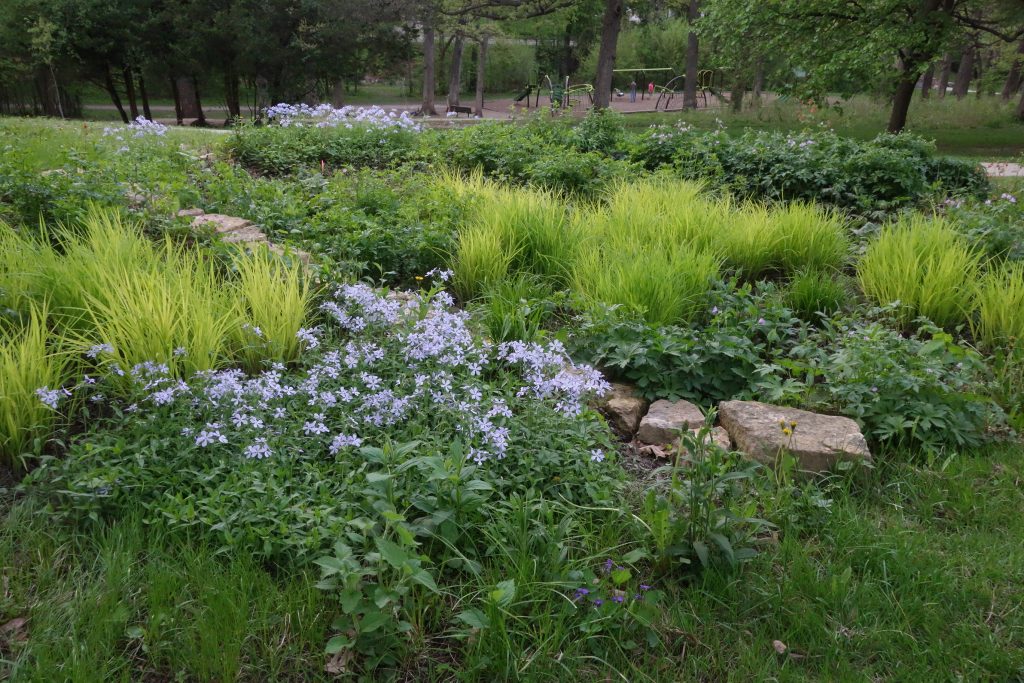
Looking back, Jack and I learned volumes about planning rain gardens and organizing volunteers. The project set a powerful example for what citizens can do to improve watershed management, keeping our lakes clean. A dusty area of eroding soil under the tree, where it was too dark for grass to grow, became a beautiful garden. Building a successful garden despite a steep slope, huge volumes of runoff, and heavy shade has been a rewarding challenge–gardening on steroids!
All photos by David Thompson
